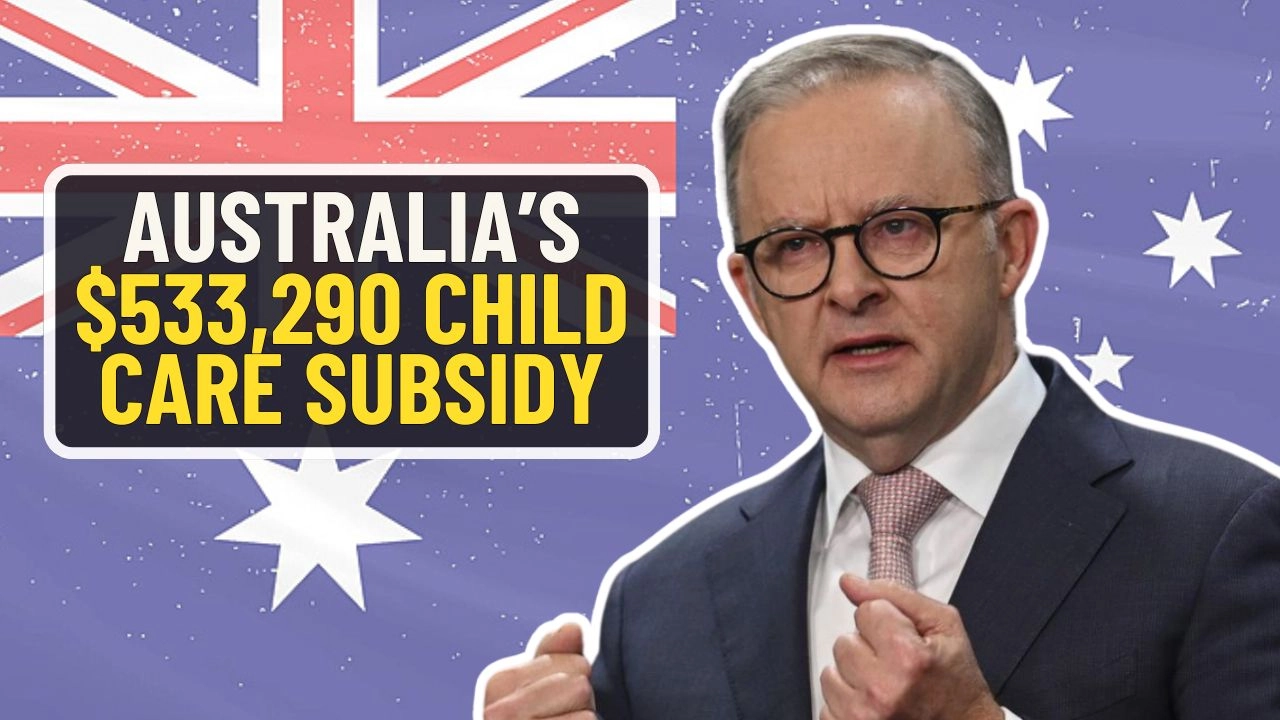In a groundbreaking move to support both working and non-working families, the Australian Government has announced a new child care subsidy program, set to launch in January 2026. This initiative introduces a substantial financial support system, providing up to 90% in subsidies, with a focus on families’ income levels. The reform promises up to 72 hours of subsidized care every fortnight through the “Three-Day Guarantee,” marking a major shift in how child care is accessed and supported in Australia.
The Importance of Affordable Child Care in Today’s Economy
As living costs continue to rise and the demand for early childhood education grows, affordable child care has become an essential service for many families. The newly proposed $533,290 child care subsidy program is designed to relieve the financial burden on families, ensuring that more parents can access high-quality early education while managing their work-life balance. This policy aims to make child care more accessible to a wider range of families, ultimately supporting the well-being and development of children from all backgrounds.
The Overhaul of the Child Care Subsidy Scheme
The Australian Government is reshaping its Child Care Subsidy (CCS) scheme to offer more flexibility and inclusivity. A key element of this overhaul is the introduction of the “Three-Day Guarantee.” Under this policy, eligible families will receive a minimum of three days of subsidized child care, regardless of their parents’ work or study commitments. This initiative seeks to ensure that every child has access to consistent early education and care, fostering positive developmental outcomes across diverse family structures.
Exploring the $533,290 Child Care Subsidy Reform

This child care subsidy overhaul represents a significant policy shift, aimed not only at providing immediate relief to families but also at investing in the future of Australia’s children. By expanding income thresholds and introducing the Three-Day Guarantee, the government ensures that more families will benefit from affordable child care. The reform supports children’s early development and provides parents with the confidence to return to work or pursue education, knowing that their children are receiving quality care and early learning.
Detailed Eligibility for the Child Care Subsidy
The Child Care Subsidy (CCS) is the cornerstone of the Australian Government’s commitment to easing the financial burden on families. The subsidy is paid directly to approved child care providers, reducing the out-of-pocket expenses for families. To qualify, parents or guardians must meet several conditions, including ensuring that their child is not enrolled in secondary school, using an approved child care provider, meeting residency requirements, and ensuring their child is up-to-date with immunizations.
How the Three-Day Guarantee Will Transform Child Care Access
Starting in January 2026, the government will remove the previous activity test and introduce the Three-Day Guarantee for families earning up to $533,280 annually. This means that eligible families can access up to 72 hours of subsidized child care every fortnight, regardless of their work or study status. The Three-Day Guarantee is designed to ensure that children receive consistent, high-quality education and care, regardless of their parents’ employment or education commitments.
Understanding the Financial Breakdown of the Subsidy
The amount of subsidy a family receives will depend on their combined annual income. Families earning up to $83,280 will qualify for the maximum subsidy of 90%, with the subsidy decreasing for higher income brackets. Even families with incomes up to $533,280 will be eligible for a reduced subsidy, ensuring that substantial financial support is available to a broad range of families across various income levels.
Applying for the Subsidized Child Care Program
Families interested in applying for the Child Care Subsidy can do so through myGov by linking their account with Centrelink. The application process requires submitting proof of income, child care details, and any relevant activity information. Once a child’s enrollment in an approved child care service is confirmed, the subsidy payments are made directly to the provider, which reduces the fees families need to pay. This streamlined process ensures that the subsidy is efficiently delivered to families in need.
Additional Support Through the Additional Child Care Subsidy (ACCS)
In addition to the standard Child Care Subsidy, the government also offers the Additional Child Care Subsidy (ACCS) to provide further assistance to families facing significant financial hardship or those with children at risk. The ACCS can cover up to 100% of child care costs, offering crucial support during difficult times and ensuring that all children, regardless of their circumstances, have access to quality care and education.
Real-Life Example: Impact on Families
Consider the case of Sarah, a single mother working part-time and earning $65,000 annually. Under the new system, Sarah would qualify for a 90% subsidy, significantly reducing her child care expenses. Additionally, the Three-Day Guarantee ensures that her child receives stable and consistent care, regardless of Sarah’s work or study schedule. This support enables Sarah to balance her financial and personal responsibilities, demonstrating the profound positive impact the new child care reforms will have on Australian families.
Economic and Social Benefits of the Subsidy Reform
Experts have widely praised the child care subsidy reform for its potential to improve early childhood development outcomes and enhance economic productivity. By increasing access to affordable child care, the government is addressing broader social challenges, such as gender inequality in the workforce and the economic participation of women. The reform is expected to increase workforce participation, particularly among women, and drive higher productivity, which benefits the broader economy.
The revamped child care subsidy system marks a pivotal moment in Australia’s ongoing commitment to supporting families and investing in the next generation. With accessible, affordable, and high-quality child care, parents will be empowered to participate more fully in the economy, knowing that their children are in good hands and receiving the early education they need for a bright future.


